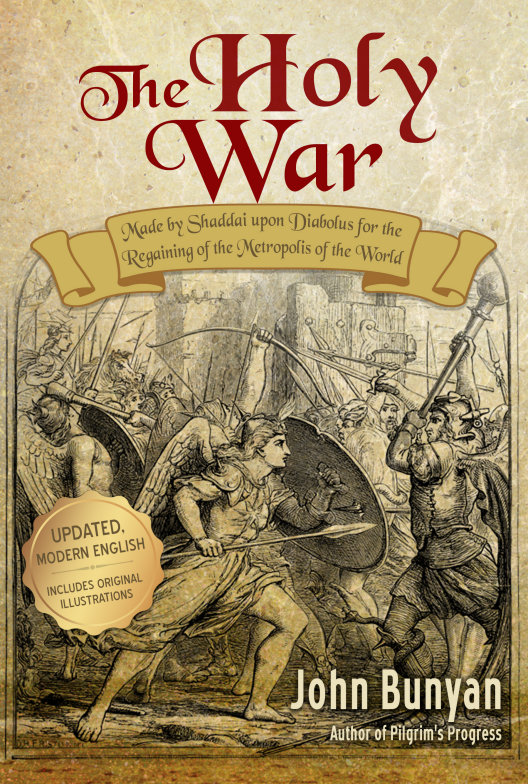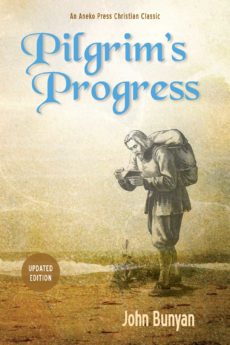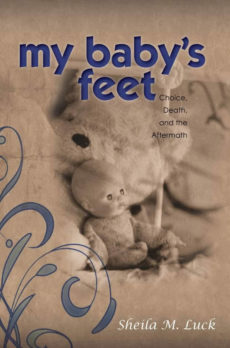The Holy War
Original price was: $18.99.$13.89Current price is: $13.89.
Written four years after The Pilgrim’s Progress, John Bunyan followed up with this second allegorical classic, which has touched hearts and minds of readers for generations.
| Quantity | Discount |
|---|---|
| 10 - 99 | 20% |
| 100 + | 40% |
Share this product
More than 100 Original Illustrations
Bonus Content: The Life of John Bunyan, by William Brock
For we wrestle not against flesh and blood, but against principalities, against powers, against the lords of this age, rulers of this darkness, against spiritual wickedness in the heavens. (Ephesians 6:12)
What if you were able to see your life from a spiritual perspective and see the actual reality of the verse above? How does our enemy, Diabolus, plan and carry out his attacks? How do his demons help, and what are their objectives? Why and how must we petition Emmanuel to get His attention and help in this great, holy war?
Written four years after The Pilgrim’s Progress, John Bunyan followed up with this second allegorical classic, which has touched hearts and minds of readers for generations. The epicenter of this book is the town of Mansoul, its people (such as Conscience, Self-Denial, and Do-Right), and its gates (Eye-gate, Ear-gate, Mouth-gate, Nose-gate, and Feel-gate). The attack by Diabolus and his demons, all of whom have appropriate names, is carefully planned and executed. As still happens to men today, Mansoul fell hard. Emmanuel is of course willing to help, but can only do so on special, seemingly strict terms. As you watch this intense battle unfold, you’ll be emboldened to fight with new vigilance, to guard the gates with tenacity, and to rely on Emmanuel’s sovereignty like never before.
It should be noted that John Bunyan focused not so much on biblical sequence or even perfect accuracy in every aspect. Instead, he honed in specifically on the spiritual battle being waged for each individual soul, filling in other details as needed to create the scenes. In this edition, we updated the text to clarify the meaning of each scene and inserted Bible verses in key areas to bring to light the depth and spiritual meaning of this powerful allegory.
About the Author
John Bunyan was born in November 1628, in Elstow, England. A celebrated English minister and preacher, he wrote The Pilgrim’s Progress (1678), the book that was the most characteristic expression of the Puritan religious outlook. His other works include doctrinal and controversial writings; a spiritual autobiography, Grace Abounding (1666); and the allegory, The Holy War (1682).
YouTube Audiobook






4 reviews for The Holy War
Almost every Christian I know is familiar with John Bunyan and his famous book, Pilgrim’s Progress, but not many are familiar with another of his works, The Holy War. The original version of this book was published in 1682. It contained prim and proper English wording commonly used at that time. Since this presented some difficulty for today’s readers, Aneko Press has carefully updated the text to aid in clarifying meaning making this challenging book relevant for today.
The book is 427 pages long and includes bonus content about the life of John Bunyan written by William Brock. A helpful glossary of names is also included at the back of the book.
The Holy War is a beautifully written allegory which takes place in the town of Mansoul. Key characters in the story are aptly named by Mr. Bunyan according to their traits or roles. I found the story quite enjoyable and felt myself becoming part of the tale as I read it. The well thought out details provided a great visual for the reader.
The story line is familiar to Christians, as Mr. Bunyan brings the spiritual realm of light and dark to life. The great battle, The Holy War, that ensues is not only between Diabolus (the evil foe) and Shaddai (the Great Prince of Peace) but between confused and conflicted townsfolk who must learn where to place their allegiance.
As I read the book, I found myself empathizing with the characters. I could easily slip into some of the roles and take on their feelings. For example, as the Prince is speaking to the people of Mansoul, in Chapter fourteen, he says, “Are you the men who permitted yourselves to be corrupted and defiled by that abominable one, Diabolus?” They answered and said, “We did more than permit it, Lord. We chose it with our own free will.” The conversation continues and as the Prince (Shaddai) allows the townspeople to think about their actions, he presents them with another question, “What punishment do you think you deserve at My hand for these and other high and mighty sins of yours?” They answer, “We deserve both death and the grave, Lord.” This powerful conversation caused me to see myself before the Lord answering the same questions.
Throughout the book, key scriptures are inserted to allow the reader a more complete understanding of previously presented text. I found each scripture to be perfectly accurate and appropriately placed. Scriptures used were taken from the Jubilee Bible (published by Life Sentence Publishing). These verses contain both Hebrew and Greek word meanings in translation.
The Holy War is a powerful book. In a nutshell, the people of Mansoul fall prey to the treachery, lies, and deceit of the evil Diabolus (the symbolic Satanic figure). They allow him to rule over them and find he isn’t quite what they thought. Mansoul has and always did belong to Shaddai, the glorious prince, (the symbolic figure of Jesus Christ). When he comes to redeem Mansoul, they don’t readily see this is the best choice to make. They’ve come to enjoy their free will and have fallen prey to all the lusts of their darkened hearts. In a last ditch effort to hold tightly to Mansoul, Diabolus asks Shaddai to grant him half the town but is refused. He continues pleading asking for smaller and smaller portions and then even asks for permission to work outside the town. Shaddai lays claim to what is his and sets the prisoners free. In the great and mighty war, the realm of light and dark clash repeatedly until finally victory is won.
I enjoyed this book very much and will keep it in my library in hopes my children and grandchildren will take time to read it one day. I’m thankful Aneko Press felt it was worthwhile to update this version of John Bunyan’s original work. I think this will make it more appealing to a wider audience of readers.
I’d like to thank Aneko Press for allowing the opportunity to review this book. I was not encouraged to give a positive review.
I read this book aloud to my children. The images of Mansoul and the different ways the enemy penetrates the city have helped our family to have a language for what goes on many times in our spiritual life. I know for our family, we preferred this over Pilgrims Progress. I would highly recommend this to anyone.
The Holy War: Made by Shaddai upon Diabolous for the Regaining of the Metropolis of the World by John Bunyan published by Aneko Press would be a beautiful addition to any bookshelf. It is updated to modern English to add in the ease of reading for multiple age levels and includes original illustrations which enhance each page. In the preface, A. R. Buckland writes, “The characters and incidents are, in effect, the characters and incidents of any age” and as I read through this work, I truly believe this to be true. The first edition was published in 1682 but the idea that man’s soul is still under attack is true to this day.
In The Holy War, Diabolous is looking for his revenge on King Shaddai and Mansoul for the wrongs he feels they (king, man, and city) have done upon him and his companions. The rebels decide to take over Mansoul and this work is the story of the fight for control of the city. During the first fight for Mansoul, King Shaddai sends four captains and eventually the King’s Son, Emammuel, is sent to “prosper and prevail and conquer the town of Mansoul” (93). During the second fight, the residents of Mansoul petition Emmanuel for aid after realizing the error of their ways.
Scattered throughout the story, intertwined with the tale of such interesting characters named Captain Resistance, Mr. Conscience, Mr. Incredulity, and Captain Conviction, are quotations from the Bible directly linked to the text. In addition to the direct quotations, this edition contains a biography of John Bunyan and a glossary of names which is extremely useful in reading this allegory.
I found The Holy War a pleasure to read. It is both uplifting and enjoyable as a story. I would recommend it without hesitation. I believe the book will appeal to several different types of readers: those interested in religion, history, and classical literature.
I received a free copy from Aneko Press for my honest opinion.
I love the book. Bunyan is genius. I couldn’t put the book down. The spiritual truths are deeply penetrating. I love Bunyan’s writings.
The only problem with this edition is that the publisher gives no credit to the illustrator. His/Her name is never mentioned???